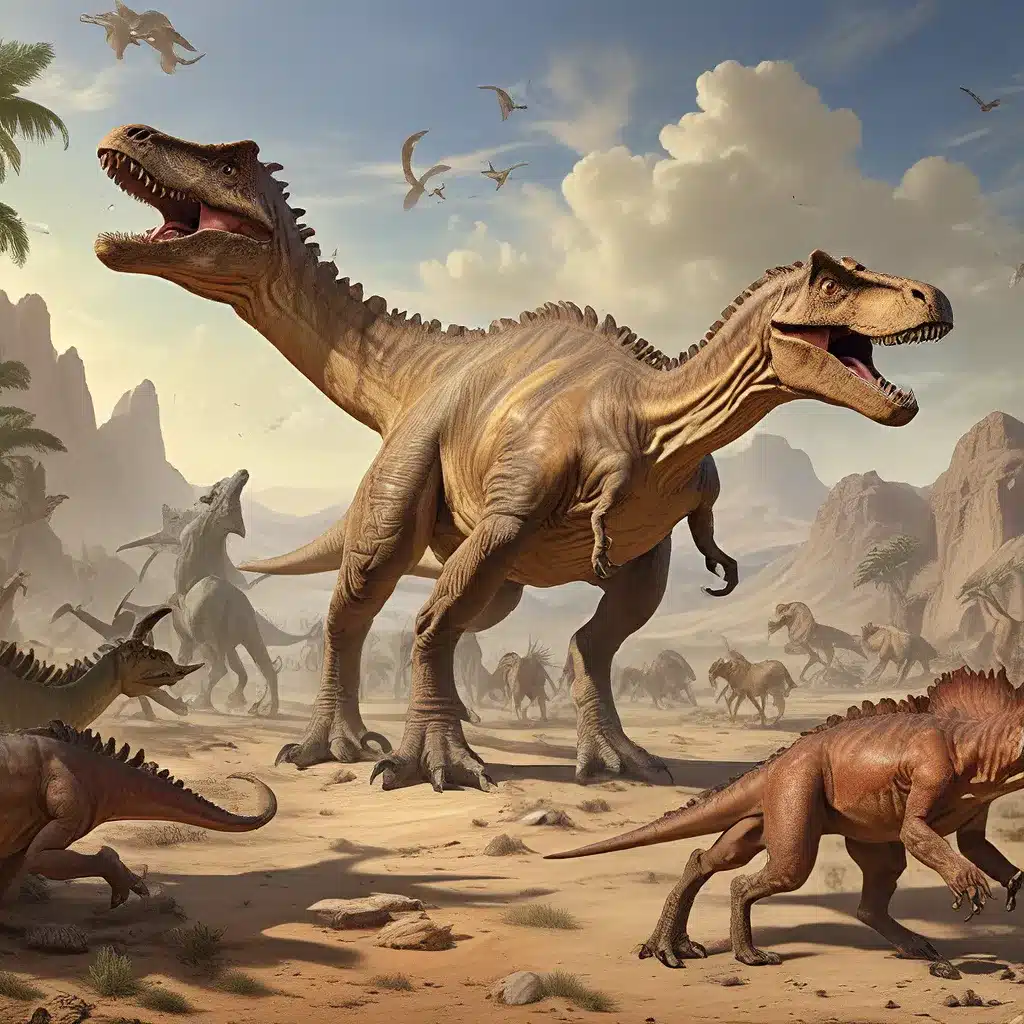
The Enduring Mystery of Dinosaur Fossils
Dinosaurs have long captured the imagination of humanity, from their fossilized remains uncovered across the globe to the captivating depictions in ancient mythologies and modern popular culture. As our understanding of paleontology has evolved over the centuries, so too has our interpretation of these incredible creatures and their place in the grand tapestry of Earth’s history.
Exploring the intersection between dinosaur fossils and ancient human cultures reveals a fascinating interplay of scientific discovery and mythological narrative. Across civilizations, from the ancient Chinese to the Mediterranean cultures of Greece and Rome, the unearthing of these prehistoric relics has often sparked the creation of fantastical tales, lending an air of mystery and wonder to the study of these remarkable beings.
Dinosaurs in Ancient Mythologies
One of the most intriguing examples of this interplay can be found in the ancient Chinese interpretation of dinosaur fossils. The Chinese were among the first to uncover the skeletal remains of these ancient reptiles, and they often attributed them to the mythical “flying dragons” that featured prominently in their folklore. The similarity between the bone structures of certain dinosaurs, such as the pterosaurs, and the depictions of these legendary creatures in Chinese art and literature is a testament to the enduring power of the human imagination to make sense of the unknown.
Similarly, the discovery of the fossilized remains of dwarf elephants on several Mediterranean islands gave rise to the myths of the cyclopes, a feared race of one-eyed giants. The large skull openings, which were once the homes of the elephants’ trunks, were interpreted by ancient Greeks and Romans as the singular eye socket of a monstrous humanoid creature. This mythological interpretation persisted for centuries, until the emergence of modern paleontology finally shed light on the true nature of these ancient fossils.
The Evolving Relationship between Paleontology and Religion
The relationship between paleontology and religion has often been a complex and sometimes contentious one, as the discoveries of dinosaur fossils and the theories of evolution have challenged traditional interpretations of the Book of Genesis and the origins of life on Earth.
The rise of Young Earth creationism, which posits that the world is only around 6,000 years old, has led to the development of museums and educational institutions, such as the Creation Museum in Kentucky, that seek to reconcile the fossil record with a literal interpretation of the biblical creation story. Figures like Ken Ham, the founder of the Creation Museum, have argued that dinosaurs coexisted with other animals on Noah’s Ark, and that the fossil record can be explained by a global flood.
However, many Christians and other religious adherents have embraced a more nuanced understanding of the relationship between science and faith, recognizing that the discoveries of paleontology and evolutionary biology need not necessarily undermine the core tenets of their religious beliefs. Scholars like Maimonides have argued that the early chapters of Genesis should be interpreted as allegorical or metaphorical, rather than as strict historical accounts.
Paleontological Discoveries and their Significance
The field of paleontology has continued to evolve, with new discoveries and technological advancements shedding light on the ancient world and the creatures that once roamed the Earth. From the CT scans that revealed the preserved remains of a baby mammoth in Siberia to the remarkable genetic material found in the bones of a Tyrannosaurus rex, these breakthroughs have helped to deepen our understanding of the natural world and the processes that have shaped it over millions of years.
Paleontologists like Zeresenay Zeray Alemseged and Bolortsetseg Minjin have made significant contributions to this ongoing exploration, unearthing fossils that shed light on the evolution of human ancestors and the diverse array of dinosaurs that once inhabited regions like Ethiopia and the Gobi Desert of Mongolia.
These discoveries have not only challenged long-held assumptions about the past but have also sparked the public’s imagination, with many museums and field sites offering visitors the opportunity to witness the work of modern paleontologists firsthand.
Reconciling Science and Faith
As the field of paleontology continues to evolve, the relationship between science and faith remains a complex and often contentious issue. While some individuals, such as the proponents of Young Earth creationism, have sought to reconcile the fossil record with a literal interpretation of the Bible, others have embraced a more nuanced understanding of the relationship between science and religion.
Ultimately, the study of dinosaur fossils and their role in ancient human mythologies serves as a powerful reminder of the enduring human fascination with the natural world and our place within it. By continuing to explore and unravel the mysteries of the past, we not only deepen our understanding of the Earth’s history but also gain valuable insights into the diverse ways in which humanity has sought to make sense of the world around us.
As we move forward, it is our hope that the field of paleontology will continue to inspire and captivate, fostering a deeper appreciation for the rich tapestry of life that has endured on our planet for countless millennia. After all, as the saying goes, in wildness is the preservation of the world.


